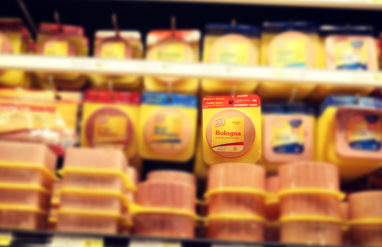Every year as the weather heats up, grills are dusted off and meats and vegetables are thrown on the fire. To those in the West and many northern cities, this is barbecuing. Just don’t call it that in the South or parts of the Midwest like Kansas City, Mo., because in certain regions, not everything cooked on a grill is called barbecue.
The word barbecue means different things depending on where you are—and the opinions are deeply, and passionately, held.
Inviting your friends over for some barbecue when everything you’re making is grilled could lead to an embarrassing moment of unmet expectations. As barbecue fans know, you can’t simply satisfy a barbecue craving with grilled meat. Things can get even more complicated eating at a restaurant where smoked meats are an option!
It’s enough to make you wonder, what’s the difference between barbecuing, grilling, and smoking?
What is barbecuing?
While you might hear barbecuing, grilling, and smoking thrown around interchangeably, there are subtle differences between them.
Coals or an open flame were how people prepared all hot meals before ovens, microwaves, and delivery services were options. We’ve come a long way since those first cookouts, but the appeal of a fire-cooked meal is still there.
The word barbecue dates back to 1655–65. It comes from the Spanish word barbacoa, which comes from the Taino, the Arawak-speaking people of the Caribbean, and described a wooden frame used for cooking meat. The barbacoa held the meat over the coals for a long period of time as it slowly cooked. It was a new style of cooking to the Spanish, and when they copied the cooking style, they copied the word, too. Over time, what was simply the name for the frame took on a variety of meanings.
Today, barbecue can refer to both the grill that the food is cooked on (as in, light the charcoal in the barbecue) and the cooked food itself (as in, let’s eat some barbecue chicken). In the case of the former, Dictionary.com defines a barbecue as “a framework, as a grill or a spit, or a fireplace for cooking meat or vegetables over an open fire.” The meat can be whatever you fancy, whether it be beef, poultry, pork, fish, vegetables, lamb, or something else entirely.
Have you thought about why some animal names get changed to meaty words when they hit the grill? Read more about why cow becomes beef and more.
Barbecue can also be a verb (barbecue the meat). It was used as a verb as early as 1690 to refer to cooking something whole over a fire.
Today, barbecue can refer to cuts of meat as well as whole-animal cooking. Whichever is the case, though, time is what makes barbecue distinct. Low and slow is the way to go. The meat is cooked for hours or even a full day over indirect heat. You can barbecue meat in a grill, underground, or anywhere that provides indirect heat. One defining factor is that barbecue is typically covered the entire time. Thick and sometimes tough cuts of steak or pork are often barbecued until tender, as well as bone-in chicken.
The secret is also in the sauce—specifically the barbecue sauce. Pretty much everyone does their barbecue sauce a little different, but vinegar, salt, pepper, and a wide mixture of spices are usually included. Barbecue sauce loyalty is regional and intense, with people in Alabama swearing by white sauce while those in North Carolina largely using a sauce of vinegar and cayenne. Kansas City uses a sweet and tangy sauce, while chefs in Texas often prefer a vinegar or Worcestershire base. Barbecued meats are usually cooked in the sauce for the whole time to let the flavors really take hold.
Finally, barbecue can be used as a general term for a get-together. Colonial Americans used barbecue to mean a party where food was cooked, and George Washington himself wrote of going to a barbecue in Alexandria in 1769.
Today, people in the South and Midwest typically only use barbecue as a party if actual barbecuing is being done—otherwise it’s just a cookout. It’s different in the West and much of the North, however, where barbecue can refer to pretty much any social gathering where food is cooked over a fire.
WATCH: Hot dogs, Coleslaw, And Other Debates About Food
What is grilling?
Grilling is like barbecue’s speedy cousin. Similar to barbecue, grilling is done on, well, a grill.
The biggest difference between something that’s grilled and something that’s barbecued is time. Grilled meats don’t need hours of cook time; grilled meat is also cooked closer to, or directly over, the heat source. Thin, boneless cuts of seasoned meat, burgers, sausages, and hot dogs are all fan favorites when it comes to grilled food.
The word grill dates back to around 1660–70 and comes from the French word for a grate or gridiron. The term matches the definition for even the most advanced modern grills today. Without that metal grate holding the meats and vegetables above the coals, there would be no grilling—or, importantly, grill lines.
The word can also be used as a verb: to grill something is to cook it quickly over direct heat, usually with the cover off. It’s most similar to broiling, and sauces are generally added late in the cooking process to keep them from burning.
An outdoor party where grilling is happening is often still colloquially called a barbecue in much of the West. Though if grilling is the only type of cooking that’s going down while you’re “barbecuing” and you’re in the South or Midwest, then you might want to switch to the more apt grilling out or cookout.
What is smoking?
When it comes to cooking, to smoke something means “to cure (meat, fish, etc.) by exposure to smoke.” It’s similar to barbecue in that smoked meat is cooked using indirect, low heat for a long time. Smoking, however, is even lower and slower, and refers to shutting meat or fish in a smoke-filled container or smokehouse to cook.
While there’s not a distinct date for when the word smoke became a distinct style from barbecue, it’s believed smoking is one of the oldest ways to preserve food. Historically, meat was smoked because it kept longer and could be eaten in leaner times. The wood smoke also, of course, makes the meat taste delicious.
Smoking sausage and ribs was popular among central European immigrants who came to Texas and the Midwest in the 1800s. This is still the part of the country today where you’re likely to find the most smoked meat, as well as a noted distinction between what’s called smoked and what’s called barbecue.
Smoking can be done on a grill, but it’s most often done professionally in a smoker that can stay closed until it’s ready. The key to smoking meat is the addition of an aromatic hardwood like mesquite, cherry, or hickory. The hot smoke from the wood is trapped in the cooker and infuses the meat with flavor.
Brisket is one of the most famous smoked meats—especially in Texas. Smoked fish is common in the Pacific Northwest. And, of course, you can’t forget smoked ribs. Exact cooking times vary based on the type of meat, with less time needed for fish and more for a thick piece of brisket.
Barbecuing, grilling out, and smoking are all popular activities in the warmer summer months. You might be the only one at the gathering (including the cook) who knows the linguistic and regional differences between the three styles, but luckily, no matter what type of cookout it is, the end result is a delicious meal!
- It’s true that some folks may judge you if you use the above terms inaccurately. But we aren’t here to judge … we are here to help you know the difference between judgment and judgement though.
- You can also satisfy your linguistic taste buds with this article on the difference between macaroon and macaron.















